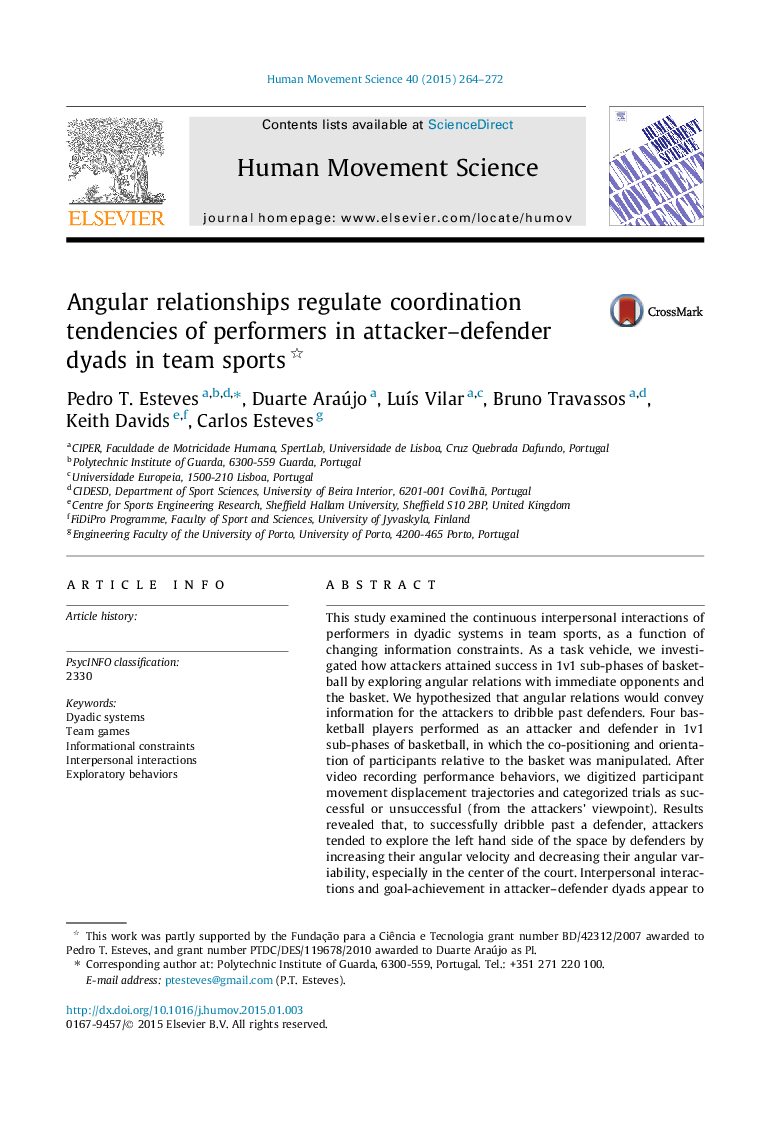| Article ID | Journal | Published Year | Pages | File Type |
|---|---|---|---|---|
| 7292116 | Human Movement Science | 2015 | 9 Pages |
Abstract
This study examined the continuous interpersonal interactions of performers in dyadic systems in team sports, as a function of changing information constraints. As a task vehicle, we investigated how attackers attained success in 1v1 sub-phases of basketball by exploring angular relations with immediate opponents and the basket. We hypothesized that angular relations would convey information for the attackers to dribble past defenders. Four basketball players performed as an attacker and defender in 1v1 sub-phases of basketball, in which the co-positioning and orientation of participants relative to the basket was manipulated. After video recording performance behaviors, we digitized participant movement displacement trajectories and categorized trials as successful or unsuccessful (from the attackers' viewpoint). Results revealed that, to successfully dribble past a defender, attackers tended to explore the left hand side of the space by defenders by increasing their angular velocity and decreasing their angular variability, especially in the center of the court. Interpersonal interactions and goal-achievement in attacker-defender dyads appear to have been constrained by the angular relations sustained between participants relative to the scoring target. Results revealed the functionality of exploratory behaviors of participants attempting re-align spatial relations with an opponent in 1v1 sub-phases of team games.
Related Topics
Life Sciences
Neuroscience
Cognitive Neuroscience
Authors
Pedro T. Esteves, Duarte Araújo, LuÃs Vilar, Bruno Travassos, Keith Davids, Carlos Esteves,
